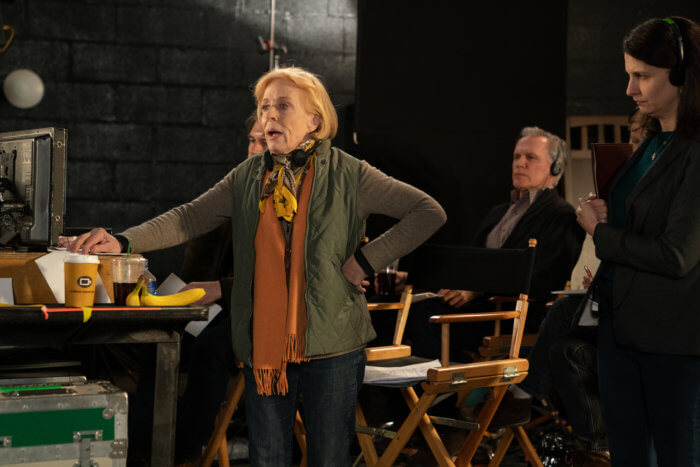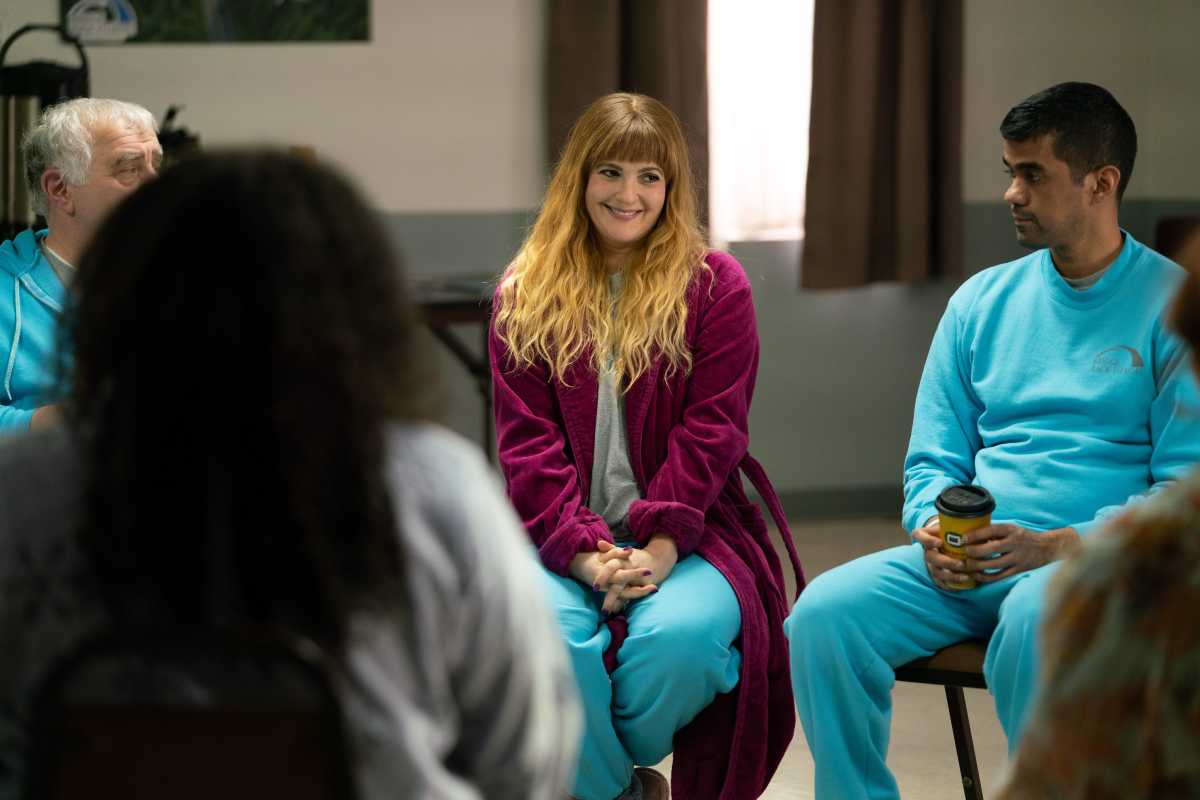The deft comedy “The Stand In,” directed by out lesbian filmmaker Jamie Babbit, gives Drew Barrymore a delicious double role, and she plays both parts with gusto.
Candy Black (Barrymore) is an actress known for making pratfall comedies (think a female Adam Sandler) and her signature line, “Hit me where it hurts!” But after an on-set meltdown, Candy becomes a pariah and then a recluse, holing up in her mansion making Shaker furniture and having a virtual relationship with Steve (Michael Zegen), a man she has never actually met.
Drew Barrymore shines in comic romp about double lives and everyday secrets
When Candy is required to go to rehab, she has her agent Louis (T.J. Miller) contact her former stand in, Paula (Barrymore), to go in her place. Yeah, it’s probably illegal, but Paula agrees on the condition that Candy will again take film roles so Paula can get her old job back. Of course, Candy’s growing interest in Steve prompts her to renege on that deal, which forces Paula to steal Candy’s spotlight — along with her boyfriend.
Babbit nimbly mines humor as all the main characters find themselves in situations that reveal a secret life and a true identity. The filmmaker — fresh off her debut film, “But I’m a Cheerleader,” getting a 20th anniversary director’s cut release — chatted about “The Stand In” in a recent interview.
GARY M. KRAMER: “The Stand In,” like “But I’m a Cheerleader,” is about finding your true identity. Can you talk about this theme of identity and reinvention, which is integral to all of your films?
JAMIE BABBIT: I definitely think that part of my artistic influences and my reason for being a filmmaker is my love for diving into a different world emotionally. I live more in my head than in reality, so I try on new identities to help actors and make shot decisions from the point of view of the characters. One way I’m able to tell each story is that I climb inside each character. In “Cheerleader,” the characters are told to be one way, but they reinvent themselves as who they are, not as society tell them to be. I relate to both of Drew’s characters in “The Stand In,” who have valid, interesting ways of looking at the world.
KRAMER: On that same topic, can you address the idea of passing? In “The Stand In,” all the major characters are living some kind of double life, which is a good metaphor for closeted people.
BABBIT: Maybe only a queer person would be interested in telling this story of characters living in different realities. My favorite scene is when Louis says he is also a totally different character. And I do think that everyone lives a double life and creates who they want to be.
KRAMER: You made a film about filmmaking, starring an actress, who had addiction problems in real life, playing an actress who must go to rehab. She gets a comeback. Her director is a female filmmaker who is played a lesbian actress. You’ve completely blurred the lines here. What are your intentions?
BABBIT: To have Holland Taylor play me is incredible, and Drew playing herself is amazing. Clearly there are many versions of Drew’s stand ins that are like the real Drew — different versions of herself. I feel all the unpacking was conscious, but some was unconscious — and I leaned into that.

KRAMER: Drew gives two amazing performances here. I love how unfiltered she is as Candy. How did you work with her on the roles?
BABBIT: What was fun was the Paula character is the furthest from who Drew was because she was famous for so long. So being desperate for a job and wanting people to love and adore her — which is what the stand in character wants — is far from Drew’s life. We put a prosthetic nose on her, and she has that famous family profile.
We walked around Times Square with Drew in her Paula outfit, and a man approached her to ask her to take a picture with Michael Zegen. He was so pleased to meet someone famous from “Mrs. Maisel.” Little did he know he had given his camera to Drew! It was good to let her experience that anonymous feeling. We took her to an open call for auditions and that was a new experience for her. It helped her infuse Paula. As for letting loose as Candy, Drew was channeling all of her many, many years of rage at being hounded by paparazzi and judged in the daily news.
KRAMER: The film certainly mocks the celebrity age we live in where videos that go viral can impact a life. What observations to you have about our current cultural climate?
BABBIT: One monologue in the film was inspired by a woman who said she was on a plane when a video of her went viral and when she landed, her life had completely changed. A stupid decision caught on camera, and life as you know it is over. Celebrity culture is worse than ever, and people are adored and trapped by millions, with everyone having a camera they can record. An autograph is less invasive. It’s a glass cage for celebrities, and I have sympathy for them. Celebrity is sold as something you want, but it can be very destructive.
KRAMER: Of course I have to ask: If you had a double who could allow you to do what you wanted, what would you do instead?
BABBIT: I have dreams of living a quiet life in a cabin and having creative pursuits, like handcrafting, knitting, making furniture. That film “The Social Dilemma” highlights the destructive nature of technology that siphons us into tunnels so that we stop talking to each other and understanding how people think. We have to express our creativity and talk to people.
THE STAND IN | Directed by Jamie Babbit | Saban Films | Available for streaming Dec. 11
To sign up for the Gay City News email newsletter, visit gaycitynews.com/newsletter.



































